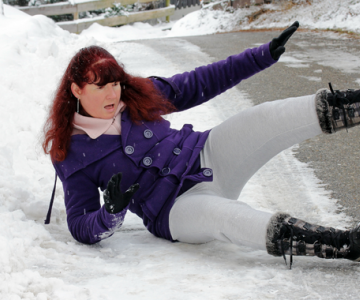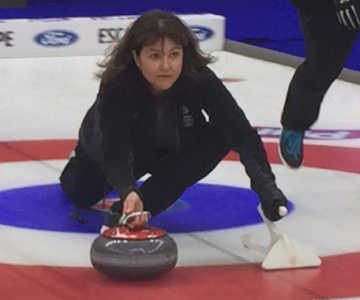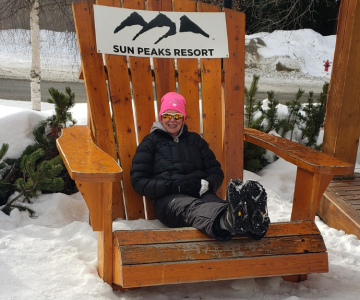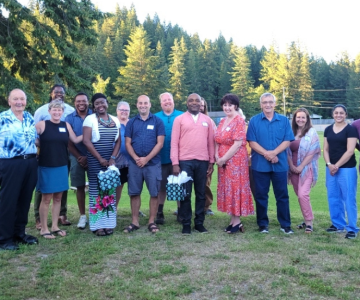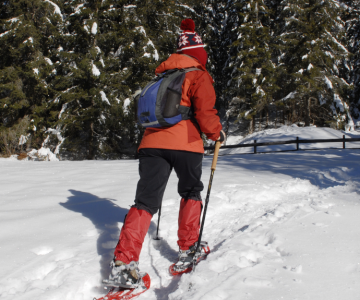Breadcrumb
Explore Stories
2 Minute Read
Health & Wellness
During the colder months it’s important to stay active and get fresh air. It’s also important to use caution in snowy or icy conditions to prevent injury from slipping or falling. You also need to be careful when shovelling your driveway.
2 Minute Read
Community & Culture
Name: Shannon Carver (she/her/hers)Job Title: Director, Medical Imaging OkanaganYears of Service: 25Worksite: Penticton Regional HospitalCommunity: PentictonAncestral Territory: Syilx OkanaganFavourite Quote / Advice to live by: Always try to look at the bright side of life – as staying positive is infectious.
Shannon hails from a small town in Saskatchewan called Kamsack. She finds inspiration from being around energetic people and loves to travel. She also participates in a variety of indoor and outdoor sports, especially those that involve water, which is what attracted her to life in the beautiful Okanagan. Shannon and her family enjoy camping, golfing, biking, boating and wake surfing. Shannon also enjoys recreating on ice, playing competitive ladies and mixed curling.
Shannon has worked with IH for 25 years and is currently the director of medical imaging for the North and South Okanagan. She was hired as a casual medical radiation technologist and worked her way up to director.
Shannon’s key to success is she values a work-life balance, and spends her free time exploring parts of the world near and far with friends and family.
2 Minute Read
Community & Culture
Name: Marilyn J. Ransome (she/her/hers)Job Title: RN - Community Integration Care CoordinatorYears of Service: 10Worksite: Lansdowne Park MallCommunity: KamloopsAncestral Territory: SecwépemcFavourite Quote / Advice to live by: “Be the reason someone smiles.” – Roy T. Bennett
Marilyn Ransome is inspired by teamwork. As a community integration care coordinator (CICC)/team leader in Kamloops, the Victoria, B.C. native is responsible for the coordination of day-to-day operations and quality client care, and supports the seamless movement of clients through the health-care system and in accessing appropriate resources.
“The home health team I work with is inspiring.” When the chips are down and our backs are against the wall, this team rallies together to help each other with tenacity, perseverance and humour.”
5 Minute Read
Community & Culture
(PHOTO CREDIT – Kalen Jones) Clearwater leaders got together last summer to celebrate the resilience of their physicians. Front row (L-R): Past Mayor John Harwood, Coun. Shelley Sim; Dr. Sandra Okezue; MP Frank Caputo; Yellowhead Community Services Vice Chair Shirley Frost; Coun. Barry Banford; Coun Lucy Taylor; Medical student Anmol Mattu; and Dr. Kayode Bamigboje; Back row (L-R): CAO John Thomas; Obi Okezue; regional district director Carol Schaffer; Mayor Merlin Blackwell and Coun. Bill Haring.
Between April and September 2022, Clearwater hospital was forced to close its emergency department almost 60 times due to emergency department RN staffing vacancies.
But instead of finger pointing, people from multiple agencies talked together about how they could make a difference. And then they went to work.
Interior Health, the District of Clearwater, individual health administrators, Clearwater mayor and council, community residents, hospital nursing and non-nursing staff, physicians, the Rural and Remote Division of Family Practice and the B.C. Nurses Union worked to find solutions to a complex problem.
The end result – no closures since early September.
Mayor Merlin Blackwell is proud of the united effort that went in to supporting Dr. Helmcken Memorial Hospital and its emergency department.
“All of us are acting as recruiters and promoters of the community,” he said.
The mayor spoke about the Clearwater situation to his peers at the Union of B.C. Municipalities, saying he believes the key was getting to know the people in the health-care system so conversations in a spirit of trust could take place.
3 Minute Read
Health & Wellness
The holiday season includes many cherished moments like festive light displays, classic carols on the radio, and visits with friends and family. But the holidays can also be mentally draining depending on your circumstance.
Read on to learn 10 ways you can take care of yourself and your mental health this holiday season.
While the following tips can help, if you're experiencing prolonged mental health challenges, such as sleep or appetite issues, low mood, or problematic substance use, contact your primary care provider or local counsellor in your community, or call 310-MHSU to reach your local Mental Health and Substance Use centre within Interior Health.
If you are experiencing feelings of hopelessness and thoughts of self-harm, call the 24/7 Interior Crisis Line at 1-888-353-CARE (2273). This confidential and free service is available day and night, even on the holidays.
2 Minute Read
Community & Culture
Name: Kathy Smith (she/her/hers)Job Title: Administrative ServicesYears of Service: 15Worksite: East Shore Community Health CentreCommunity: East Shore/Crawford Bay and Surrounding CommunitiesAncestral Territory: Kootenay/KtunaxaFavourite Quote / Advice to live by: The best gift you can give someone is your time.
Kathy Smith was born in Edmonton. She lived in the towns of Calmar, Warburg and Whitecourt, Alta., before moving to Riondel, B.C. in 1999. Kathy considers herself “loyal to a fault at times” and likes to help people.
She believes this career chose her. “When asked if I wanted to work as a receptionist in a small clinic in Riondel for Dr. Savory, little did I know that it was so much more than just answering a phone and making appointments. I have been able to help people who have a hard time trying to navigate our ever-changing system. It has been a very huge learning curve for me, which I love.”
3 Minute Read
Community & Culture
Connie Griffin works in administrative services at the West Kelowna Health Centre. One of the volunteers she's worked with since 2001, Ingrid Hawthorne, now in her late 80s, retired at the end of November. Ingrid originally began volunteering in the baby clinic where she would greet the parent, get the baby checked in, and record their weight and measurements.
This role has changed many times over the years, and now volunteers mostly act as greeters. Ingrid also volunteered at influenza clinics, greeting and registering people or being the line-up traffic director.
2 Minute Read
Health & Wellness
For many people, one of the best things about the holidays is the food.
From the scrumptious side dishes of creamy mashed potatoes, to the decadent desserts of apple pies and all the laughs in between. Yet, the holidays can get so busy with shopping, entertaining, decorating and going out to celebrate that we often forget to take time to relax and enjoy the season.
It is helpful to take time to pause and reflect. This reflection is sometimes referred to as mindfulness.
The term “mindfulness” was defined by Jon Kabat-Zinn as “paying attention in a particular way, on purpose, in the present moment, and nonjudgmentally.” According to an article in the Diabetes Spectrum journal, “the practice of mindfulness has helped thousands of people to live more intentionally and develop the skills necessary to manage chronic pain, disease, depression, sleeping problems, and anxiety.”
Developing a mindfulness practice, especially mindful eating, may be helpful when holiday parties and dinner invitations abound.
2 Minute Read
Community & Culture
Name: Diane Betman (she/her/hers)Job Title: Clinical Practice EducatorYears of Service: 15Worksite: Vernon Jubilee HospitalCommunity: VernonAncestral Territory: Syilx OkanaganFavourite Quote / Advice to live by: “Don’t go through life, grow through life.” – Eric Butterworth
Born in Three Hills, Alberta (and, yes, there are actually three small hills close by), Diane Betman, clinical practice educator, has also lived in Nova Scotia, Brazil and B.C. In fact, she can speak Portuguese fluently as she lived in Brazil for 14 years.
A friendly, positive person, when Diane reflects on her choices, she believes no other career would have given her more satisfaction than nursing.
“Being a nurse has given me the opportunity to meet so many different people and learn from them while supporting their health journey. I am always learning something new and, as a clinical practice educator, I get to share these learnings with other staff. I hope that at the end of the day I have been a positive influence in the lives of others.”
-
Load More
Showing 270 of 677
STAY CONNECTED
Receive news and alert posts, and Stories@IH blog posts, right to your inbox!

